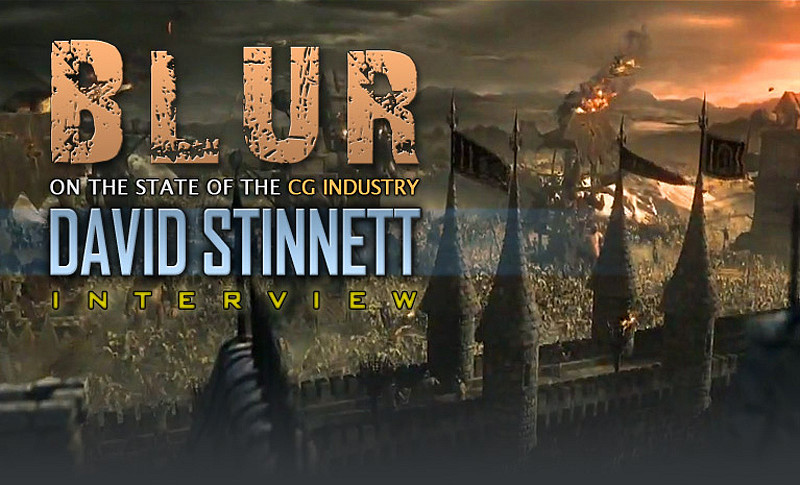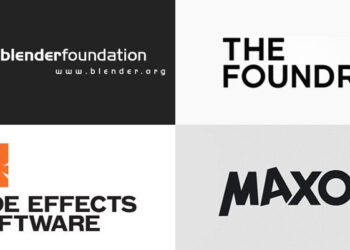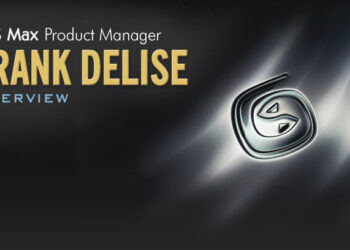By Dave Baker, Neil Blevins, Pablo Hadis
and Scott Kirvan
Foreword
In our aim to analyze the evolution of the CG Industry we’ve had the great pleasure to talk to David Stinnett, co-founder of the legendary Blur Studio. Blur is a privileged place to ask our questions: it’s one of the longest running studios (as its “Blur.com” URL address attests), a central player in the CG business, consistently producing top-quality work, and a first-hand witness of the changes in the industry. Last but not least, the studio’s distinctive no-nonsense attitude means we get real answers, from real people – no filtered replies, no marketing trash, no noise on the line.
For Max Underground this article is, in the year of its 10th anniversary, a way of going back to its roots. Early news items posted at MU point to Blur’s website: this is because MU was conceived while its founder was working at Blur Studio. Neil Blevins, who is currently working at Pixar, has spent many years working at Blur, too. This translates into a Blur interview done by Blur insiders, you’ll notice that the replies offer particular insights into the inner workings and culture of the studio. Asking questions about Blur, however, is asking questions about the industry itself.
Blur turned 15 years old last April, it was founded in 1995 by David Stinnett, Tim Miller and Duane Powell who wanted a place to work at without the bothersome daily interferences and bureaucracies of a management-oriented mindset. A place for artists, created by artists. This was possible in part due to the rise of desktop computers and 3D desktop software, and the history of Blur and its founders is tied to the history of 3D Studio and 3DS Max.
Without further ado we present you an interview with David Stinnett on the past, present and future of the CG Industry. Enjoy!
The Interview
Tell us a little about your makeup effect days. You worked on Tremors, and puppeteered the Crypt Keeper from Tales Of The Crypt, correct?
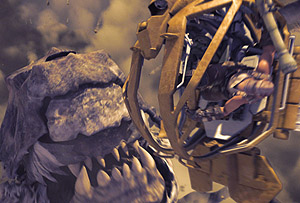
Sirius and Argent go on a fishing trip in one of Blur’s first short films: Rockfish, written and directed by Tim Miller
Yea, I started in ’88 doing makeup effects and animatronics (years earlier if you count personal projects and student films). After doing misc stuff on some ultra low budget films and tv shows, I landed my first big gig on Tremors. After that I worked for various MFX shops working on the 2nd and 3rd Chucky films, the Bill and Ted sequel, Tales from the Crypt, Terminator 2, Honey I shrunk the kids sequel (yes… did lots of sequels), and various other films. On Tales from the Crypt, it took 6 people to operate the Crypt keeper, and I was one of those for a few seasons. I also did animatronics and prosthetic makeup on the show for a couple seasons.
What made you decide to pursue digital effects instead of continuing to do practical effects?
I had always had a fascination with CG, starting I guess with Tron, but I also remember getting all the "Mind’s eye" Laserdiscs and just thinking they looked cool. I got my first computer, a gateway PC around ’91, but that just started as a game machine. I then remember seeing Autodesk Animator Pro, a 2d animation package, and thinking "I can do that myself? Awesome!". Not long after that I was at a local computer fair (with table after table of hardware and software for sale), and saw a demo reel playing for 3D Studio v2, and I remember my jaw dropping. I tracked down a local reseller (yes, ALL my software was purchased legally… There was no "internet" per say back then… just dial in bulletin boards, and Compuserve)… anyway, I bought 3D Studio V1 with a free upgrade to V2 when it came out. I then spent my nights messing around with that. I guess there had been 3d software on the Amiga before 3DS, but I didn’t know that until long after starting with 3DS… If I had known earlier, I would have likely gone the Amiga route… and interestingly enough, had I done that, I wouldn’t have got my job at Sony, and would not have been part of Blur (I’m sure Blur would still be here, it just would have started a little differently).
In some ways, learning digital effects must have felt like starting over again from scratch, after already being established in a career path. Did the learning curve worry you?
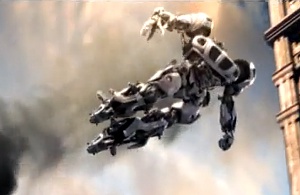
A cinematic trailer produced by Blur for the launch of Transformers: The Game, a third-person action-shooter based on the live action feature film
It was certainly starting from scratch, but it didn’t worry me. I learned the Makeup FX on my own, through trial and error, and many years and late nights in my garage. With computers, it was the same. I just spent lots of time and late nights learning it by doing. This included the hardware as well as software. Come to think of it, I guess a lot of those late nights were spent playing Doom, but that’s still working on the computer, right?
Talk a little bit about your time at Sony. Was it your first digital gig after doing make up effects?
I was active on the Compuserve 3DS section, and when I posted the first pics I was comfortable posting, I got a call from Gary Yost, the Developer of 3DS. He was amazed that I was able to get near photo real images of organic subjects from his software. That led to me getting on his beta testing team for 3DS 3, 4, and the first plugins, IPAS (remember those?). In late ’94, if I have my timeline correct, while still doing physical FX, I got a call from Sony, saying that Gary Yost recommended me for a job there. I went in for an interview, and got the job. I started when my FX gig finished a couple weeks later. I had to take a pay cut, but since I was starting over, that was fine.
Do you remember the first day you met Tim Miller?
The exact day? No, but he seemed like one of the only guys there who was really into it. We would geek out about the latest software, plugins, etc. It wasn’t just a job to him, he really loved doing it, which was something we had in common.
Blur is more known for doing amazing game cinematics and working on fully-animated shorts/features, but the studio produces visual effects for feature films too. You tend to supervise many of these film jobs – you recently completed several pick up shots for Avatar. What draws you to the film projects?
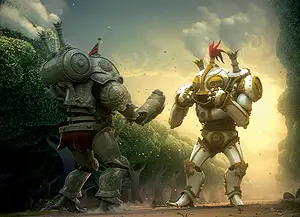
A Gentlemen’s Duel – Dubois and Weatherby compete for the affections of a lady in steam-powered mechs, in this short film produced in 2006
I’ve been drawn to VFX since I was a kid. Star Wars was the start of that (that’s the 1977 Star Wars, kids, not the new ones 🙂 I started out doing models and miniatures in my garage, then transitioned to Makeup FX. But I’ve always had a love of VFX. Unfortunately the nature of VFX for a shop of our size means its very difficult to make money, or break even, doing the typical vfx that we bid (tends to be the low budget stuff). The game cinematics aren’t big money makers either but we do ok, and it keeps us going. The budgets are better for large format ride type stuff and commercials. However, The game cinematics are really more related to what we ultimately want to be doing… our own CG features. They are short stories, all CG, and we generally get a lot of creative freedom with the concept, writing, editing, animation, sound and music. They are really just small movies. However, I still like the VFX work when we get it. On Avatar we did all the space shots, and would have done more on it if we had the people, but we were packed at the time and had to turn down some stuff they asked us to do.
How many projects are generally in production at Blur at the same time?
Obviously it varies, but it’s not unusual to have 10 projects of various sizes and in various stages in house at one time.

